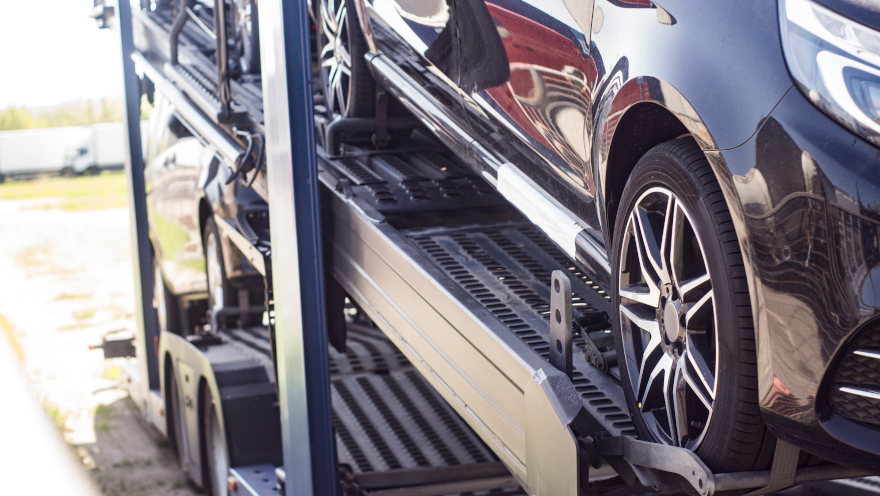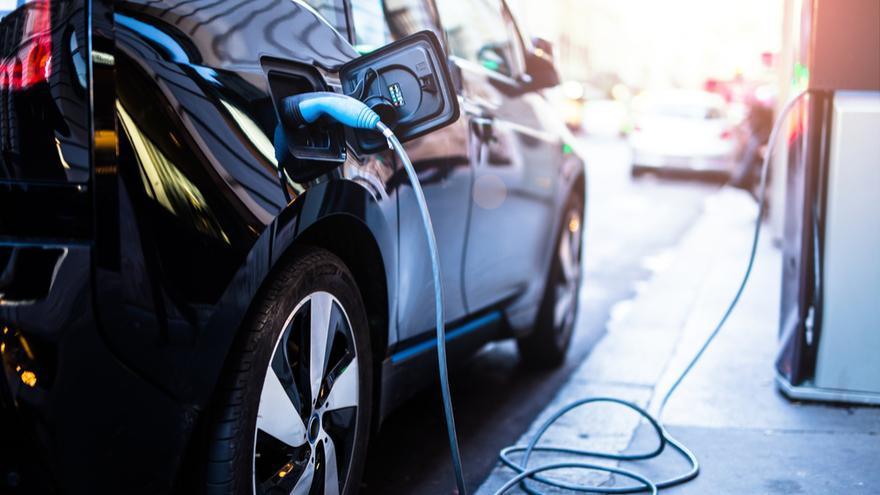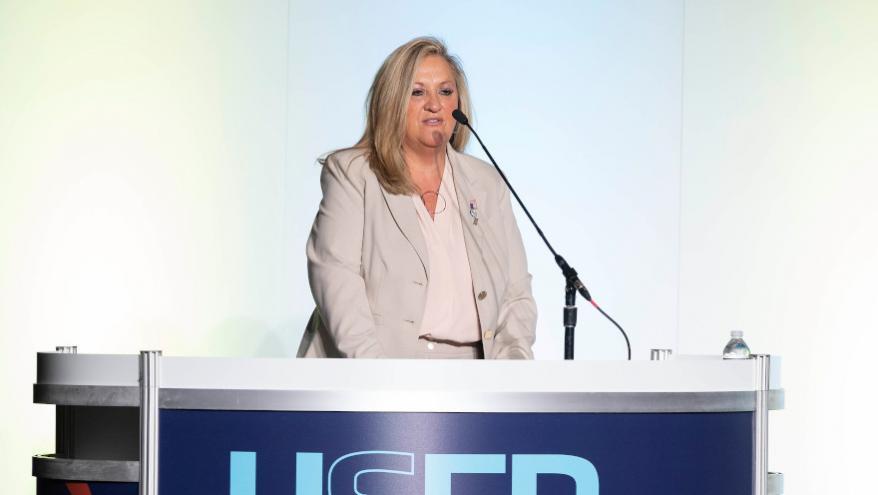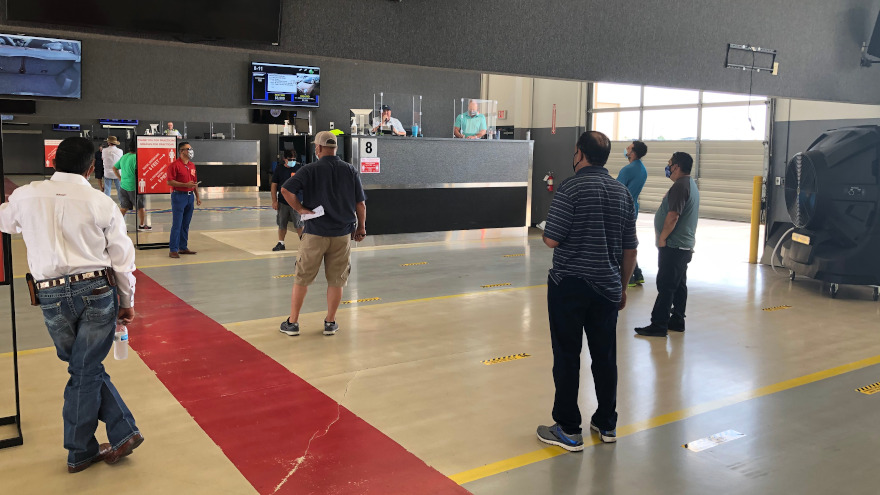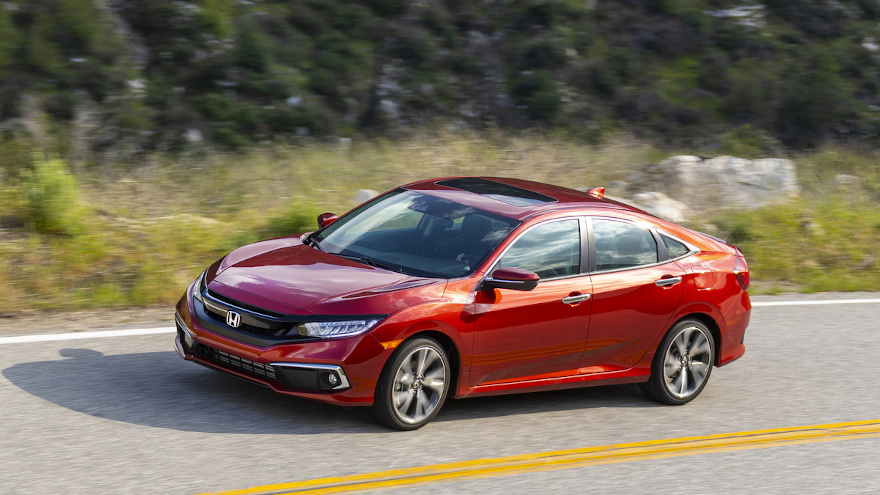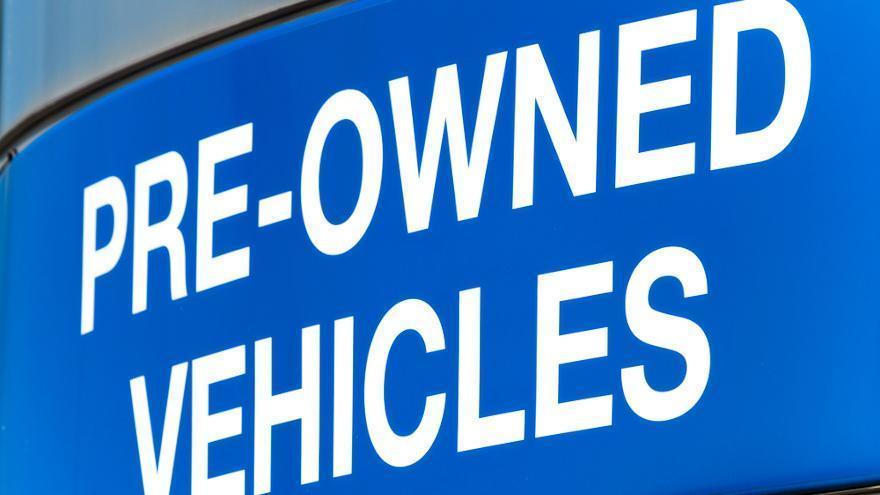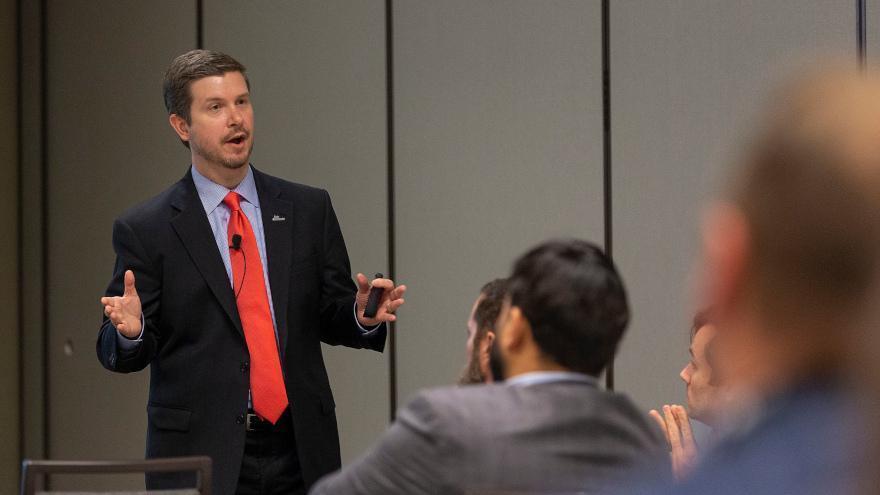Less than half of car dealers were providing home-delivery of vehicle purchases when the COVID-19 pandemic began in March, according to CARS Dealer Community data from the group that includes Cars.com, DealerRater and Dealer Inspire.
However, 66% of dealers were offering such services by August, the data shows. About a fifth of recent buyers have used that option, according to DealerRater data.
And it’s an option that many consumers say they would want.
In fact, 61% of respondents in DealerRater’s mid-September survey of recent car buyers said they would like to have purchase be delivered from the local dealership to their home, if that option was available.
“Approximately 20% of recent car buyers used home delivery from their local dealership, while 61% of recent buyers state they would use this service from their local dealership if it were offered, showing sustained interest in this growing trend,” Cars.com said in a news release, citing the DealerRater data.
Just like week, CarMax said that its omni-channel experience, which lets consumers buy used cars online, in-store or a blend of both, is now nationwide.
The largest retailer of used cars in the U.S. said Thursday it has finished rolling out its omni-channel capabilities, a process it started in late 2018 with the launch of omni-channel in Atlanta.
With this omni-channel program, CarMax shoppers can utilize the company’s e-commerce to browse, save and transfer vehicles, while also lining up pre-approval and getting an online appraisal of their trade-in.
The transaction can be completed at a CarMax store or online, with options for home delivery (for most shoppers) or contactless curbside pickup at a store (which is available across the U.S.)
Going back to the CARS data, while the pandemic certainly has changed how consumers are taking delivery of their car purchases, the pandemic is what’s driving many consumers to buy a car in the first place.
The CARS Gen Pop In-Market Car Shoppers survey in mid-August revealed that 57% of consumers who bought a car in the prior six months said they did so because of the pandemic.
But they’re doing it online, instead.
Cars.com internal site analysis from last week indicated that dealerships are seeing a 15% drop in walk-in traffic. Meantime, data from the company shows that 57% of recent buyers completed most of the purchase online with a local dealership.
“During the start of the pandemic, and certainly far beyond, consumers have turned to personal car ownership as their preferred and safe mode of transportation," Cars.com chief executive officer Alex Vetter said in a news release.
“While the technology and digital retailing tools are not new to the industry or CARS, there is a noticeable increased usage driven by shopper demand and dealers are rapidly shifting their strategies to meet this new consumer expectation,” Vetter said.
In a
similar analysis, Cox Automotive found that 47% of consumers who made a vehicle purchase since mid-March completed more of that process online than they did on prior vehicle purchases.
And 60% of six-month purchase intenders who have bought a vehicle before said they would like to do more of that process online the next time, according to the report on dealer and consumer sentiment that Cox released last week.
On the service side of the equation, Cox Automotive said among those who have had their car serviced during the pandemic, 19% took advantage of pick-up and delivery options. And satisfaction with such services appears to have climbed recently, going from 85% on Aug. 7-8 to 95% Sept. 18-19, the Cox data shows.
Among franchised dealers, 59% are giving consumers the vehicle pick-up and delivery option for service appointments, with 37% of independents offering this option, according to Cox Automotive.
The impact of COVID-19 on the electric vehicle market is more like a yellow light than a red light, according to a new whitepaper from Cox Automotive Mobility.
Or as the analysis puts it, the hit to EVs will be, “more of a stallout than a vanishing act.”
The company released a whitepaper Monday titled “COVID-19 Recovery: Speed Bump or Accelerate for the EV Market?” written by Cox Automotive head of research and development Lea Malloy.
“While we may experience a short-term dip in EV growth due to COVID-19, many factors set a course for a positive long-term trajectory,” Malloy said in a news release accompanying the whitepaper.
“Ultimately, cross-industry collaboration will facilitate EV advancement and consumer adoption,” she said. “At Cox Automotive, our goal is to enable this new market in support of a closed-loop service ecosystem together.”
The company explores three key themes in the paper, among other areas.
One of those is the “real and perceived costs” — including maintenance, battery life and incentive availability — and how those are hurdles to overcome.
The paper also explores infrastructure.
“Access to EV charging nationwide will continue to play a critical role in consumer purchase and adoption, as well as the transition to an all-electric fleet future,” the company said in a news release.
Additionally, the whitepaper looks at how to avoid “unintended consequences.” Cox Automotive says there needs to be a fast response from the industry “to advance capabilities to extend battery first life and provide appropriate end-of-life options to protect our communities and the environment.”
Looking at the introduction of the report, Malloy says the slowdown in the EV market is driven more by “longer production lead times” than it does about automaker goals.
In fact, the whitepaper shares several 2020 EV launches by Volkswagen, Volvo, Audi and Ford, though not all are confirmed for the U.S.
Going back to the point of 2020 being a “stall out” instead of “vanishing act,” Malloy ways in the paper, “In fact, recent signs suggest that any stall out may have more to do with long production lead times and less about dimming ambition by OEMs. How long the stall out will last is a point of much conversation.
“Fact of the matter is, the push to electric is inescapable as carmakers scramble to meet strict emissions targets in Europe, China and nationally, including California and an ever-growing list of states that have adopted or are poised to adopt California’s zero-emissions mandate,” she said.
“Moreover, many manufacturers have spent billions of dollars in research on EV technology, which has been underway for years, with many billions more committed in the years to come,” Malloy said. “Some OEMs have literally bet their whole future on these vast investments, making it unrealistic to reel in.”
The paper can be downloaded at www.coxautoinc.com.
For more from Malloy on the EV market, see the episode of the Auto Remarketing Podcast below.
Like it has with so many other industries, the COVID-19 pandemic has caused a major shift at auto auctions over the last seven months.
Whether that’s putting a greater emphasis on digital sales and not running cars through the lanes — as has been the case with the industry’s two largest corporate auction houses, Manheim and ADESA — or running in-lane sales with social distancing protocols, 2020 has been a year of change in how auctions operate.
In a sense, the same could be said for the organization that represents them.
Typically, this feature profiling the incoming president of the National Auto Auction Association would arrive with the group set to hold its annual convention, and its leadership having toured member auctions throughout the year.
But this is no typical year, and NAAA has had to pivot.
To get a sense of that shift, Auto Remarketing connected with 2020 NAAA president Laura Taylor and incoming president Julie Picard over Zoom in late August.
Safety remains key
Entering her presidency, Taylor’s top priority was safety, with live training programs scheduled for the spring CAR Conference and plans to carry the training beyond managers and owners.
How the importance of safety has manifested itself has changed.
“Workplace violence and safety was on top on everybody’s mind. Well, with COVID striking, it brought out an even different realization of how important this program was going to be. The first direction we went in, we thought it was not quite what we were looking for as far as an active shooter (training session), so we came up with active threat preparedness,” Taylor said
NAAA has been mindful of how a pandemic and its subsequent furloughs, terminations and illnesses, can have on one’s well-being.
“It’s really heightened awareness of things to look for that will pinpoint maybe something we can do to help recognize and intervene before a situation occurs,” Taylor said.
And at the top of NAAA’s webpage is a 13-page document titled “Active Threat Preparedness Plan.”
The “Purpose and Objectives” section of that plan states:
“A priority of the National Auto Auction Association is to assist member auctions in providing a safe workplace for employees, customers, and guests. The Active Threat Preparedness Plan will assist auction members with a training guide to educate staff in preparing for potential risks in the workplace.
“Active Threat training is to provide staff education and planning for:
• The events leading up to and during an active threat (what to look for)
• How to react during an active threat/shooting
• Communication of any suspicious or unusual activity
“The goal is to Be Alert, Not Alarmed.”
And in May, NAAA made a pair of resources available to help members as they navigate the challenges of orchestrating sales and serving their consignor and dealership clients while the coronavirus pandemic continues.
Along with an informational video, NAAA distributed an 18-page document titled, “Playbook: Auction Start-up, Response to COVID-19.”
In addition to safety resources, NAAA has also educated its members about financial relief measures they can utilize. It conducted a webinar with the South Carolina director of the U.S. Small Business Administration to explain the steps auctions need to take for PPP loans and other relief packages, Taylor said.
Staying in touch
Usually, the NAAA leadership would spend much of the year visiting various auctions around the country, keeping abreast of industry issues and keeping in touch with its membership.
In lieu of in-person visits, Taylor and Picard have found other ways of staying in contact with NAAA members.
“Some of the things that I’ve done are actually make phone calls to the members. a lot of them are my dear friends, so of course we checked up to make sure that families were doing good,” Taylor said. “A lot of them had questions, so they would call and ask what we were doing.”
Taylor has also turned to avenues like podcast appearances, webinars, eblasts and even handwritten cards.
And of course, lots of Zoom calls.
Though she acknowledges that “it’s not the same” as in-person visits, Taylor says she has been impressed with the “phenomenal” way the industry has handled a challenging year.
“There may be a shortage in inventory, but the conversion rates have been through the roof,” she said. “Everybody’s really busy trying to stay safe, get everything together that they need. So, we’ve not wanted to overwhelm them with a lot of information.
“But we’ve tried to get as much out there as possible, what we deem necessary for them to be able to look at and follow,” Taylor said. “Hats off to them, though; they’ve really handled this year quite well.”
Picard, NAAA’s president-elect, said that while it has been “disappointing” to not visit as many auctions as she would have liked to in 2020, “but like all of us making our way through this COVID-19 epidemic, we’ve had to rely more on the phone calls, the (Microsoft) Teams meetings, Zoom to keep the lines of communication going. Until which time we’re able to travel to auction locations and attend in-person conferences, I intend to continue to communicate with our members virtually.”
Picard added: “I am currently creating a virtual meeting list with myself and soon-to-be president-elect Charles Nichols and we’ll host weekly meetings with the NAAA members, clients and various industry partners. And we’ll also continue to communicate important industry information through NAAA emails and On the Block.”
Leadership transition
Oct. 8 is NAAA’s official “Presidential Transition Day.” As she takes on the mantle of NAAA leadership, Picard said her top priority will be diversity and inclusion, particularly, but not limited to, bringing more women into the industry.
“It’s definitely an area that, I think, continues to need a lot of focus. First in getting more women and others interested in our business is extremely important,” Picard said. “We need to focus on the recruitment, development and retention of the women, improved opportunities for women and the like. And greater recognition.
“I think this industry, as Laura (Taylor) knows, is an amazing career for women, whichever path you take — operations, finance, reconditioning. You see auto techs out there now that are females,” she said. “And I just think there needs to be a continued focus in that area to continue to get great women, strong women that love the industry the way that Laura and I do and are passionate about the success of being in the industry long-term at every level of the organization.
“Not just the top, not just in miscellaneous functions (or) entry-level (positions), but actually throughout the entire organization,” she said. “And to see continued career paths for women and truthfully, people of color — all diversity is included in this.
“Just sprinkle our industry with great talent,” she said. “That’s going to mean that we have to show up a little bit differently.”
For example, interviewer panels. You might have a diversity in the candidate pool, but if the same people are on the interview committees over and over, “you’re never going to end up with anything different,” she said.
Picard said that there is “a lot of work to do here, but I’m excited about it. And truthfully, I think most people in the industry are excited about the opportunity that we have in these areas.”
Speaking of jobs and bringing new people into the auction industry, NAAA launched AutoAuctionJobs.com last year, with the aim of connecting job seekers with NAAA member auctions with positions to fill.
“As we learn more what post-COVID auto auctions need to be, I think it will be an opportunity for us to expand this website to also cover any additional auto auction opportunities that are out there,” Picard said.
As far as changing skill sets in the auction industry, Picard said; “Like most businesses these days, it’s very important to employ individuals, truthfully, that are comfortable with constant change. Because our industry continues to change by the minute. And as we become more digitized, it allows easier centralization of many of these auction functions, which will allow us to provide a better, more consistent experience for our clients. But this changes the look of auto auctions, as Laura mentioned, how we once knew them.
“As we continue to invest in technology and in our reconditioning facilities in order to better serve new and, truthfully, existing clients, the need for automotive technicians, it doubled,” she said. “And reconditioning roles will continue to be a large focus for all of us as we move forward, because there’s a lot of opportunity on the recon side of the business with the emergence of more fleets, etc.”
Also on Picard’s agenda is continuing NAAA’s safety efforts and continuing to make improvements in auction safety. She also emphasized innovation in the digital and vehicle information spaces as well as creating more efficiencies throughout the industry.
For more with Picard and Taylor, see the below episode of the Auto Remarketing Podcast, recorded this summer.
Manheim said Monday it has added seven auctions in the Southeast to its Digital Block in-lane bidding program, meaning the company now has more than 50 locations in the program.
The auctions added this week are all in Tennessee (Manheim Nashville) or Florida (Manheim Central Florida and Manheim Fort Myers, Manheim Pensacola, Manheim Daytona Beach, Manheim Jacksonville and Manheim Lakeland).
Last week, the company added four Pennsylvania auctions and two in Houston to the Digital Block sales.
Dealers at these 50-plus pilot locations are able to bid in-lane through Digital Block sales, which include in-lane bidding on site at Manheim auctions with a live auctioneer and simulcast.
Vehicles remain stationary and can be viewed on screens. They do not move through lanes.
“Digital Block sales offer our clients another way to do business safely and on their own terms,” Manheim division vice president Alan Lang said in a news release.
“Dealers using Digital Block sales tell us they are saving time by viewing and bidding on cars on the same day,” Lang said. “And, consistent with our re-opening plans, we follow strict safety protocols, including adhering to state and local guidelines such as following the 250-person capacity per sale rule at our Pennsylvania-based locations.”
Manheim, which commemorates its 75th anniversary this year, is “moving forward with a Digital First marketplace strategy to transition its auction marketplace into a single client experience maximized for digital interactions and supported by efficient and flexible physical operations,” the company said in a news release.
“This includes unifying Manheim’s digital platforms, such as Manheim.com and Simulcast, with its physical assets to give clients an enhanced experience no matter how they choose to conduct business,” it added.
The company is also investing in the “next generation of vehicle information,” Manheim said, with the goal of providing additional images, stronger visuals and more mechanical/safety data to clients digitally “to help remove subjectivity and drive greater buyer and seller confidence.”
While still facing headwinds, recent information from the U.S. Department of Labor, the Conference Board and ManpowerGroup showed encouraging trends associated with jobs — a key indicator for potential dealership retail vehicle sales and finance company portfolio health.
Acknowledging on Labor Day that “this has been a year of extraordinary challenges for American workers,” U.S. Secretary of Labor Eugene Scalia went into this past holiday weekend giving upbeat details from the August Employment Situation Report.
“The report significantly beat expectations with the unemployment rate dropping to 8.4% even as more Americans entered the labor force,” Scalia said. “Unemployment fell across all demographics, and the 1.4 million jobs added showed increases across most industry sectors. This follows a string of other reports showing a strong recovery underway.”
Another of those potential recovery guideposts arrived this week courtesy of the ManpowerGroup Employment Outlook Survey, which showed employers in the U.S have improved hiring plans for the fourth quarter following the 10-year low reported in Q3.
The survey of more than 8,700 U.S. employers conducted in July indicated the most positive outlooks for the three months ahead are reported in leisure and hospitality, transportation and utilities as well as wholesale and retail trade. As lockdowns lift, ManpowerGroup said consumer spending is buoyed by employment benefits and people across the country leave their homes to begin to socialize and shop.
Also according to the survey, employers in manufacturing report a 7-percentage point improvement as supply-chain bottlenecks ease and workplaces open.
However, ManpowerGroup found that businesses now anticipate a slower hiring levels than initially expected.
In April, 60% expected hiring levels to return by January, but that level now sits at just 25%, While 11% expect hiring to return by next July, 5% expect longer as 21% remain uncertain.
Furthermore, ManpowerGroup discovered the impact of the pandemic is transforming the way U.S employers plan to get work done for the long-term.
The survey showed 34% plan to offer remote work and flexible hours in the post-pandemic workplace with 8% planning to offer 100% remote work to employees.
“Though we still have a long way to go to recover from what started as a health crisis and has evolved to a social and economic crisis, it is encouraging to see optimistic outlooks in some of the industries most heavily impacted including leisure, retail and manufacturing,” ManpowerGroup North America president Becky Frankiewicz said in a news release.
“We also see employers recognize this recovery will take longer than they initially thought and many are adapting work models for the long term,” Frankiewicz continued. “This is accelerating a shift closer to what we know workers have wanted for some time; autonomy to choose how and where they get their work done, more learning on demand, and a focus on achieving a better blend of work and home.
“Now is the time for employers to offer targeted skills development and more flexible future-focused work options for those working remote and in the workplace,” she went on to say.
Whether working remotely from home, in an office setting or a factory floor, Curt Long sees the labor market still has notable challenges to overcome. The chief economist and vice president of research at the National Association of Federally-Insured Credit Unions offered this assessment after reviewing the latest data from the Labor Department.
“The August employment was solid, with job gains meeting expectations, labor force participation growing and the unemployment rate declining,” Long said
“One glaring problem area was a big jump in workers suffering permanent job loss. That figure did not change in July, but increased by 530,000 in August,” he continued. “There are now 3.4 million such workers, which is halfway to the peak of the Great Recession.”
Finally, over at the Conference Board, higher than the upwardly revised July reading of 51.37. However, the index is down from 109.8 registered a year ago.
August’s increase was fueled by positive contributions from six of the eight components that experts use to form the Employment Trends Index. They leverage eight labor market indicators, saying that aggregating individual indicators into a composite index that filters out “noise” to show underlying trends more clearly.
The eight labor-market indicators aggregated into the Employment Trends Index include:
— Percentage of respondents who say they find “jobs hard to get” (The Conference Board Consumer Confidence Survey)
— Initial claims for unemployment insurance (U.S. Department of Labor)
— Percentage of firms with positions not able to fill right now (National Federation of Independent Business Research Foundation)
— Number of employees hired by the temporary-help industry (U.S. Bureau of Labor Statistics)
— Ratio of involuntarily part-time to all part-time workers (BLS)
— Job openings (BLS)
— Industrial production (Federal Reserve Board)
— Real manufacturing and trade sales (U.S. Bureau of Economic Analysis)
“Despite the rise in new COVID-19 cases at the beginning of the summer, job growth continues to gain momentum. The Employment Trends Index increased for the fourth consecutive month,” said Gad Levanon, head of the Conference Board Labor Markets Institute.
“Over the coming months, job growth will persist as industries impacted by social distancing such as travel, hotels, restaurants and personal care will continue to recover,” Levanon continued in a news release. “However, another wave of infections this fall would limit the expansion of the U.S. labor market.”
Experian identified leasing market penetration among the top 20 automakers that booked that kind of financing during the second quarter.
Swapalease.com also pinpointed two factors that could enhance brand loyalty in the leasing segment; information that could be especially valuable since the site discovered nearly eight out of every 10 leaseholders would like to exit their lease contract before it is completed.
First, let’s examine which OEMs are doing the most leasing nowadays, according to Experian’s Q2 2020 State of the Automotive Finance Market report. The top 20 automakers for leasing market share include:
1. Honda: 13.55%
2. Toyota: 9.73%
3. Chevrolet: 7.99%
4. Ford: 7.77%
5. Nissan: 5.84%
6. Jeep: 5.79%
7. Mercedes-Benz: 4.80%
8. BMW: 4.58%
9. Hyundai: 4.19%
10. Kia: 4.05%
11. Lexus: 3.59%
12. Subaru: 3.04%
13. Mazda: 2.84%
14. GMC: 2.33%
15. Volkswagen: 2.29%
16. Acura: 2.17%
17. Audi: 2.15%
18. RAM: 1.82%
19. Volvo: 1.78%
20. Cadillac: 1.64%
Furthermore, Experian noted the particular models that held the highest leasing market share in Q2. That rundown included:
1. Honda Civic: 4.5%
2. Honda CR-V: 2.8%
3. Toyota RAV4: 2.7%
4. RAM 1500: 2.3%
5. Honda Accord: 2.3%
6. Chevrolet Equinox: 2.2%
7. Ford F-150: 2.2%
8. Jeep Grand Cherokee: 2.1%
9. Ford Explorer: 1.9%
10. Toyota Tacoma: 1.8%
In a separate project, Swapalease.com commissioned an online survey in July and asked 500 consumers and 500 dealership executives a series of questions about vehicle leasing, the experience surrounding lease shopping as well as lease transfer.
Site officials discovered 58% of consumers polled said they would either consider or definitely escape their lease without breaking the contract or face any other financial penalty.
And 73% of survey participants told Swapalease that they would be willing to stay with the same brand if they had an easy time transferring their lease.
Furthermore, 66% of dealers told Swapalease that they also believe an easier way of conducting lease transfer would increase the chance of a person to stay with the same brand.
With the survey being conducted in July, the top reasons cited by leaseholders for wanting out of the contract likely won’t surprise dealerships. They included:
— 39% lost their job
— 21% have been furloughed
— 29% say their company is making cuts
“Automobile leasing proves beneficial since it allows people to constantly drive a nicer car at a lower monthly payment, and for a shorter period of time, compared to buying one,” Swaplease said in a report that accompanied the study findings.
“It is also estimated that a majority of all lessees look to escape their contracts early for a variety of reasons aforementioned. This number is risen sharply due to the financial strains COVID-19 has placed on many households,” the report continued.
“Unfortunately, early termination of a car lease may cost several thousands of dollars, making it financially impossible for many to exit their lease agreements without facing hefty penalties from the leasing company or dealer,” Swapalease went on to say in the report.
Dealers appear to want to help because it would be mutually beneficial as mentioned in the Swapalease.com report.
The site discovered through its survey that 27% of dealers believe their sales would increase 9% or more if they could help customers transfer out of their lease into a different vehicle.
Swapalease pointed out this level climbs to 46% when dealers think sales would generate at least a 7% lift.
“When you have a customer that wants or needs out of their lease for any number of reasons, they appreciate a brand’s willingness to help and that plays a significant role in the decision they make when deciding on their next vehicle,” Swapalease executive vice president Scot Hall said in a news release.
“Over the years we have seen time and again thousands of people who feel the frustration of a brand that places roadblocks on this process, and that frustration single-handedly makes their decision to move to a different brand in their next vehicle,” Hall added.
Though with gains not as strong as those from earlier in the month, August closed on a high note for the used-car operations of franchised dealers, as their pre-owned the last full week of the month beat pre-virus forecasts by 1%.
That’s according to the latest Auto Industry Impact Report from J.D. Power, which showed that in each of August’s four full weeks, franchised dealer used sales were either even with or above pre-virus projections.
For the week ending Aug. 9, they climbed 5%. The following week, used sales for franchised stores were up 4% from pre-pandemic forecasts, according to J.D. Power. The week ending Aug. 23, they were flat.
And the week ending Sunday, they were up 1%.
Late last month, ALG was projecting that used-vehicle sales for August would beat year-ago figures by 4% and top July’s numbers by 2%.
Specifically, the analytics division of TrueCar was calling for 3.6 million used-vehicle sales for August.
ALG chief industry analyst Eric Lyman said in a news release that the year-over-year gain in used-car sales comes “as consumers turn toward the used-car market for cost savings during these uncertain economic times, and also due to some supply shortages on the new-vehicle side.”
Lyman added, “While this heightened demand is creating upward pressure on used retail prices, it is making it a great time for consumers to get top value on a trade-in on popular used vehicles.”
Looking strictly at what it considers retail sales (no private-party figures included, just independent and franchised dealers), Cox Automotive found that compared to a year ago, used-car sales were down in the final week of the month.
“Our estimated retail sales using a same-store methodology shows us that the recovery lost ground in August and deteriorated last week,” Cox Automotive chief economist Jonathan Smoke said in video report released Tuesday.
“Sales for the seven days ending Saturday were down 14% year-over-year for used and down 30% for new,” Smoke said. “Hurricane Laura caused big declines in several Texas and Louisiana markets.”
With Labor Day weekend straight ahead, experts and policymakers still view the economy like the vehicle that arrives at your dealership’s service drive with the customer saying it hesitates, despite stepping hard on the accelerator.
At least two high-level federal officials see the need for more assistance to get the U.S. economic engine running smoothly again, as economists spot ailments that could be the equivalent of a failing head gasket.
Treasury Secretary Steven Mnuchin gave testimony during a digital hearing this week hosted by the U.S. House Select Subcommittee on the Coronavirus Crisis.
Mnuchin first highlighted the successes of the CARES Act and the Payroll Protection Program before acknowledging not all economic problems are solved. Federal lawmakers still have not taken additional actions since many initial programs expired at the end of July.
“While we continue to see signs of a strong economic recovery, we are sensitive to the fact that there is more work to be done, and certain areas of the economy require additional relief,” Mnuchin said. “When it became clear that previous negotiations were not moving forward, the president took executive action to provide critical relief to Americans through lost wages assistance and other important items.
“We will continue to try to work with the Senate and the House on a bipartisan Phase IV relief package,” he continued. “I believe a bipartisan agreement still should be reached and would provide substantial funds for schools, testing, vaccines, PPP for small businesses, continued enhanced unemployment benefits, child care, nutrition, agriculture and the U.S. Postal Service, along with liability protection for universities, schools and businesses.”
Also this week, one of the board of governors at the Federal Reserve emphasized the importance of another stimulus. Lael Brainard gave a speech during a webcast hosted by the Hutchins Center on Fiscal and Monetary Policy at the Brookings Institution in Washington, D.C.
Brainard said, “the economy continues to face considerable uncertainty associated with the vagaries of the COVID-19 pandemic, and risks are tilted to the downside. The longer COVID-19-related uncertainty persists, the greater the risk of shuttered businesses and permanent layoffs in some sectors.
“While the virus remains the most important factor, the magnitude and timing of further fiscal support is a key factor for the outlook. As was true in the first phase of the crisis, fiscal support will remain essential to sustaining many families and businesses,” she continued.
And when it comes to vehicle sales, federal-government assistance appears to be a key drive as Cox Automotive pointed out through a recent consumer survey.
Perhaps reinforcing those survey findings, Curt Long offered his assessments after the Commerce Department released its auto sales data for August. Long is chief economist and vice president of research at the National Association of Federally-Insured Credit Unions (NAFCU).
“Vehicle sales extended their recovery, rising for the fourth straight month since bottoming out. Nevertheless, sales remain 11% below prior-year levels,” Long said. “Low gas prices and interest rates are tailwinds, but ones which are buffeted by tight inventory and growing unemployment. In addition, dealers are reporting more shoppers are facing financing constraints.
“The recovery in the auto market has been far more modest than in the housing market, where high-income households flush with cash and eager for larger homes are driving sales well above year-ago levels,” he continued. “NAFCU expects auto sales gains to slow as pent up demand is fully exhausted and permanent job losses grow.”
Meanwhile, regular reading of the employment landscape arrived on Wednesday.
Private sector employment increased by 428,000 jobs from July to August, according to the August ADP National Employment Report, which is produced by the ADP Research Institute in collaboration with Moody’s Analytics. The report, which is derived from ADP’s actual payroll data, measures the change in total nonfarm private employment each month on a seasonally-adjusted basis.
“The August job postings demonstrate a slow recovery,” said Ahu Yildirmaz, vice president and co-head of the ADP Research Institute. “Job gains are minimal, and businesses across all sizes and sectors have yet to come close to their pre-COVID-19 employment levels.”
Comerica Bank chief economist Robert Dye pointed out that while the August report figure is an improvement from July, it’s down considerably from the significant gains generated in May and June — 3.3 million and 4.9 million, respectively.
“Normally, this would be a very strong number, but it falls short of the consensus expectation of about a million new jobs for this report,” Dye said.
“We remain in the middle of a soup of opposing forces in the labor market,” he continued. “Some businesses are rehiring furloughed workers. Others are laying workers off as PPP loan restrictions roll off. Some are adjusting to a new world of lower demand with additional layoffs, and some are hiring in response to new opportunities.
“We expect to see the volatility of net job growth diminish in the months ahead as overall gains continue to trend down,” Dye went on to say.
Despite continue turbulence in the job market — which could impact vehicle sales since steady employment can be a significant factor in pulling the trigger on a purchase and securing financing — there remains some hopefulness as discovered by IBM.
The August findings of an ongoing IBM Institute for Business Value (IBV) survey also surfaced this week. While the results showed 70% of surveyed Americans said COVID-19 has made them more concerned about the safety and health of themselves and their families, one-third of responding Americans believe the U.S. economy will recover in 2021. The depth of that optimist varies by age as IBM detailed:
— 69% of millennials (ages 25-39) are concerned about their job security and 60% said the pandemic has taken a toll on their mental health, higher than all other age groups.
— Baby Boomers (ages 55-70+) are the most pessimistic on economic recovery, with seven in 10 reporting they believe their nation's economy will continue to see an economic downturn or significant recession.
— Generation Z (ages 18-24) is the most optimistic about the economy, with more than half noting they believe the economy will recover to its pre-COVID-19 state in the next few months.
During his digital appearance on Capitol Hill this week, Mnuchin reiterated, “We remain committed to making sure that every American gets back to work as quickly as possible.”
Add auctioneers to the list of professionals from throughout the automotive industry having to put in more effort to overcome challenges created by the coronavirus pandemic.
In the latest installment of COVID-19 Market Insights released by Black Book on Tuesday, analysts described what’s happening in the lanes nowadays as dealers continue to keep a close watch on their inventory and floorplan.
“For the past two weeks, auctioneers have been finding themselves having to work harder to get the bids up,” Black Book said.
“This past week, more bids were resulting in ifs and no-sales as buyers showed hesitancy in stepping up an additional $300 to $400 to meet the sellers’ floors,” analysts continued in the latest report.
That reluctance and awareness about sellers’ floors arrived as Black Book noticed that its volume-weighted information showed overall car segment values increased just 0.04% this past week, representing the lowest week-over-week value increase since the third week of May.
Analysts explained that sub-compacts, compacts and sporty cars each sustained value decreases ranging from 0.13% to 0.36% because of softening retail demand.
Conversely, Black Book noticed the luxury segments are demonstrating value stability, especially premium sports cars that gained 0.55% week-over-week.
Over on the truck side, analysts indicated their volume-weighted information showed overall truck segment values (including pickups, SUVs and vans) rose by 0.41% last week.
Black Book pointed out the upward value march for full-size trucks continued into the 14th week in a row.
“New-inventory deliveries are starting to increase after months of struggles to get production back going, so it is expected that this rate of increase will begin to slow,” analysts said.
And speaking of those new models, their arrival at franchised dealerships is also prompting managers to be “more selective in the used units they are sourcing at auction and the trade-ins they are keeping,” according to Black Book.
Analysts then added, “This past week, dealers backed off in their purchasing with the reason being that they want to wait to see how consumer demand shapes up over the Labor Day weekend.”
Black Book touched on one other ongoing difficulty that’s intensified since March and how the industry is trying to use technology to solve the issue.
“With transportation continuing to present a challenge for buyers and sellers due to the time and cost required to move vehicles, some sellers are making use of the virtual sales by listing their vehicles for sale but vehicle pickup is at their dealership or another holding location,” analysts said.
“This is beneficial to sellers because it is allowing them to get their units offered for sale sooner,” they went on to say.
The Conference Board Consumer Confidence Index decreased in August after declining in July, too.
But the latest consumer survey by Cox Automotive pinpointed what could reverse that course and potentially push retail vehicle sales and financing higher.
In what might not come as a surprise to some managers, the possible tonic is another direct stimulus payment to consumers from the federal government.
According to the latest segment of the ongoing 2020 Cox Automotive COVID-19 Consumer Impact Study, the percentage of consumers in the market to make a vehicle purchase in the next six months is at its lowest level since the pandemic began in early March.
As of Saturday, Cox Automotive chief economist Jonathan Smoke indicated the survey data showed the level of intention to purchase within the next six months stood at just 15%. That’s below the spring readings of 20% Cox Automotive recorded in March and April as well as the metrics from earlier this summer (17% in mid-June and 16% in July).
“The pent-up demand is gone,” Smoke said in a video that accompanied the survey data.
According to the Cox Automotive consumer survey, the top reasons for a vehicle-purchase delay in:
— Waiting to see if the federal government will provide a second stimulus check: 28%
— Concerned about cost/financial situation: 27%
— Concern about having contact with people: 26%
— Prefer to stay home/social distancing: 20%
— Not driving as many miles as usual/don’t need a vehicle now: 19%
— Waiting to see if I can get a better deal or special incentive: 19%
Likely not helping demand is sagging consumer confidence as tracked by the Conference Board, which shared its latest index about the economic element earlier this week.
Its Consumer Confidence Index now stands at 84.8, down from 91.7 in July.
The board reported its Present Situation Index — based on consumers’ assessment of current business and labor market conditions — decreased sharply from 95.9 to 84.2.
And its Expectations Index — based on consumers’ short-term outlook for income, business and labor market conditions — declined from 88.9 in July to 85.2 this month.
The monthly Consumer Confidence Survey, based on a probability-design random sample, is conducted for The Conference Board by Nielsen, a leading global provider of information and analytics around what consumers buy and watch. The cutoff date for the preliminary results was Aug. 14.
“Consumer Confidence declined in August for the second consecutive month,” said Lynn Franco, senior director of economic indicators at The Conference Board. “The Present Situation Index decreased sharply, with consumers stating that both business and employment conditions had deteriorated over the past month.
“Consumers’ optimism about the short-term outlook, and their financial prospects, also declined and continues on a downward path,” Franco continued in a news release.
“Consumer spending has rebounded in recent months but increasing concerns amongst consumers about the economic outlook and their financial well-being will likely cause spending to cool in the months ahead.”
What’s cooling that spending is reduced unemployment benefits stemming from the CARES Act as an additional $600 week from the federal government to the more than 30 million Americans who have lost their job expired at the end of July.
The spring also included $1,200 payments to individuals with more money from the federal government going to married couples and families with children. Perhaps some consumers used a portion of that money to make a vehicle purchase.
Should Congress and the White House agree on another COVID-19 relief package and include direct payments to individuals and families, dealerships and finance companies could see some of that money based on what surveyed consumers told Cox A,utomotive.
A total of 62% of consumers who participated in Cox Automotive’s project expect to get another stimulus payment with their intentions including:
— Pay monthly household bills: 41%
— Everyday spending: 37%
— Pay off debt (loans, credit cards, etc.): 37%
— Save all or some of the money: 35%
— Pay for home service or repair: 14%
— Pay for vehicle service or repair: 14%
— Purchase/down payment on a vehicle: 8%
— Purchase/down payment on a home: 5%
Should federal lawmakers return to Washington, D.C., and continue dialogue about assistance, they will be met with consumers’ assessment of present-day conditions receding.
The Conference Board determined the percentage of consumers claiming business conditions are “good” declined from 17.5% to 16.4%, while those claiming business conditions are “bad” increased from 38.9% to 43.6%.
Consumers’ appraisal of the job market also deteriorated, according the board’s latest findings.
The percentage of consumers saying jobs are “plentiful” declined from 22.3% to 21.5%, while those claiming jobs are “hard to get” increased from 20.1% to 25.2%.
The Conference Board went on to mention consumers were also more pessimistic about the short-term outlook.
Experts said the percentage of consumers expecting business conditions will improve over the next six months declined from 31.6% to 29.9%, while those expecting business conditions will worsen edged up slightly from 20.2% to 20.5%.
Furthermore, the Conference Board noted consumers’ outlook for the labor market was less positive.
The proportion expecting more jobs in the months ahead declined from 29.6% to 29.1%, while those anticipating fewer jobs increased from 21.3% to 21.9%.
Regarding their short-term income prospects, the percentage of consumers expecting an increase declined from 14.8% to 12.7%, while the proportion expecting a decrease rose from 15.8% to 16.6%.
Smoke wrapped up his latest video analysis with comments that might forecast some rough sledding ahead for dealerships and financing when it comes to potential retail sales and contract originations.
“We have a high level of unemployment and reduced benefits occurring, so there is much concern about demand soften from that perspective,” Smoke said.
“And when you look at the market, record prices and low inventory making it a less attractive time to buy and now we’re seeing a significant number of would-be buyers saying they’re waiting for another stimulus check to make a purchase,” he said.

